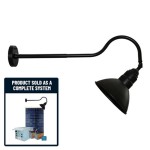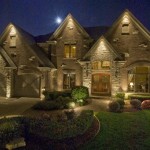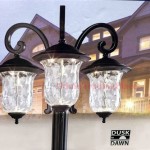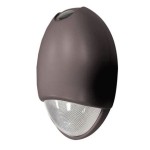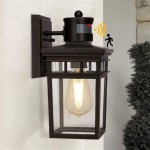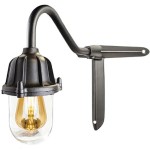Outdoor Tennis Court Lighting: A Comprehensive Guide
Outdoor tennis court lighting is a crucial aspect of ensuring accessibility and enjoyment of the sport beyond daylight hours. Adequate and well-designed lighting systems enhance visibility, improve player performance, and extend the usability of tennis courts, contributing to a more vibrant and active community. This article provides a comprehensive overview of the key considerations involved in designing and implementing effective outdoor tennis court lighting solutions.
The selection and installation of appropriate lighting for outdoor tennis courts involve a delicate balance between technical specifications, environmental considerations, and budgetary constraints. Factors such as the size and layout of the court, the level of play anticipated, and the surrounding environment must all be carefully evaluated to ensure a lighting system that meets the specific needs of the facility. Furthermore, adherence to industry standards and best practices is essential to guarantee both optimal performance and long-term reliability of the lighting infrastructure.
Level of Play and Lighting Requirements
The intensity and uniformity of lighting required for an outdoor tennis court are directly correlated to the level of play that will be taking place. Recreational players generally require lower illumination levels than professional athletes competing in tournaments. Understanding the intended use of the court is therefore a fundamental step in determining the appropriate lighting design.
For recreational tennis, a lighting level of approximately 300 lux (lumens per square meter) is typically sufficient. This level provides adequate visibility for players to see the ball and move around the court safely. However, for higher levels of competition, such as sanctioned tournaments or professional matches, the recommended lighting level increases to 500 lux or even higher. These higher levels of illumination ensure that players can track the ball accurately, even at high speeds, and that spectators can clearly follow the action.
Beyond the overall lighting level, uniformity is equally important. Uniformity refers to the consistency of light across the playing surface. A court with uneven lighting can create shadows and glare, making it difficult for players to judge the ball's trajectory and hindering their performance. To achieve optimal uniformity, careful consideration must be given to the placement and aiming of the light fixtures.
The International Tennis Federation (ITF) publishes guidelines for lighting standards for different levels of play. Consulting these guidelines is recommended to ensure that the lighting system meets the requirements for the intended use of the court. These standards address not only illuminance levels but also uniformity ratios, glare control, and color rendering.
Types of Lighting Technologies
Several lighting technologies are commonly used for outdoor tennis courts, each with its own advantages and disadvantages. The most prevalent options include metal halide, LED (Light Emitting Diode), and high-pressure sodium (HPS) lighting. Understanding the characteristics of each technology is essential for making an informed decision.
Metal halide lamps have been a traditional choice for outdoor sports lighting due to their high light output and relatively good color rendering. However, they are less energy efficient than newer technologies and require a warm-up period before reaching full brightness. They also have a shorter lifespan compared to LEDs and require more frequent replacement.
LED lighting is rapidly becoming the preferred technology for outdoor tennis courts due to its superior energy efficiency, long lifespan, and excellent light quality. LEDs consume significantly less energy than metal halide lamps, resulting in lower operating costs. They also offer instant on/off capabilities and can be easily dimmed or controlled remotely. The long lifespan of LEDs reduces maintenance costs and the need for frequent replacements.
High-pressure sodium (HPS) lamps are known for their high efficiency and long lifespan, but they produce a yellowish light that can distort colors. While they are often used for street lighting and other outdoor applications, their poor color rendering makes them less suitable for tennis courts, where accurate color perception is important for tracking the ball.
When selecting a lighting technology, it is important to consider the total cost of ownership, including initial purchase price, installation costs, energy consumption, and maintenance expenses. While LEDs may have a higher upfront cost, their lower operating costs and longer lifespan often make them the most cost-effective option in the long run.
Advancements in LED technology have also allowed for more precise control over light distribution. This allows lighting designers to minimize light spill and glare, reducing light pollution and improving the overall visual environment.
Design Considerations and Installation
Proper lighting design and installation are critical to ensuring that the lighting system performs optimally and meets the specific needs of the tennis court. This involves careful consideration of several factors, including pole placement, fixture aiming, and light spill control.
The placement of light poles is a key factor in achieving uniform lighting across the court. The poles should be positioned strategically to minimize shadows and glare, and to provide adequate light coverage in all areas of the playing surface. Generally, four to eight poles are used for a standard tennis court, depending on the height of the poles and the type of fixtures being used. The height of the poles is also important, as higher poles allow for wider light distribution and reduce glare.
Fixture aiming is another crucial aspect of lighting design. The fixtures must be aimed precisely to direct the light where it is needed and to minimize light spill. This can be achieved using specialized aiming tools and techniques. Proper aiming ensures that the light is distributed evenly across the court and that players are not subjected to excessive glare.
Light spill control is increasingly important, especially in residential areas. Light spill refers to light that shines beyond the boundaries of the tennis court, potentially causing disturbance to neighbors or affecting the surrounding environment. To minimize light spill, fixtures with appropriate shielding and optics should be used. Shielding can be added to the fixtures to block light from escaping in unwanted directions. Optics can be used to focus the light beam and direct it more precisely onto the playing surface.
Furthermore, consider the impact of the lighting system on the surrounding environment. Dark-sky compliant fixtures, which direct light downward and minimize upward light pollution, are often required in areas with sensitive ecosystems or strict zoning regulations. These fixtures help to preserve the natural night sky and reduce the impact of artificial lighting on wildlife.
During installation, it is crucial to hire qualified electricians and lighting professionals who have experience in installing outdoor sports lighting systems. Proper installation ensures that the system is safe, reliable, and performs according to specifications. This includes ensuring that all wiring and connections are properly grounded and protected from the elements.
Before commissioning the lighting system, it is recommended to conduct a light audit to verify that the lighting levels and uniformity meet the design requirements. This involves measuring the light levels at various points on the court and comparing them to the specified values. Any discrepancies can be addressed by adjusting the fixture aiming or making other necessary modifications.
Ongoing maintenance is essential to ensure the long-term performance and reliability of the lighting system. This includes regularly inspecting the fixtures and poles for damage, cleaning the lenses to remove dirt and debris, and replacing lamps as needed. A preventive maintenance program can help to identify and address potential problems before they become more serious, extending the lifespan of the lighting system and reducing the risk of costly repairs.
Consider the use of smart lighting controls to further optimize the performance of the lighting system. Smart controls allow for remote monitoring and control of the lights, enabling users to adjust the lighting levels based on the time of day or the level of play. They can also be used to schedule the lights to turn on and off automatically, reducing energy consumption and extending the lifespan of the lamps.
Selecting a reputable lighting manufacturer and supplier is also crucial. A reputable company will provide high-quality products, offer expert technical support, and stand behind their products with a solid warranty. This will ensure that the lighting system is reliable and performs as expected for many years to come.

The Best Tennis Court Lighting Solution Guide 2024 Hyh

The Guide To Sports Lighting Take Tennis Court For Example Agc

Led Tennis Court Lighting Layout Design Guide Sports Venue Calculator

Tennis Court Architectural Lighting Led Stadium Flood Lights

Find A Solution For Your Sports Field Lighting Tennis Court

The Guide To Sports Lighting Take Tennis Court For Example Agc

What Kind Of Lamps Should Be Used For Indoor And Outdoor Tennis Court Lighting

Led Tennis Court Lights And Lighting For Pickleball Other Sports

Led Tennis Court Lighting Layout Design Guide Sports Venue Calculator

Outdoor Tennis Court Lighting Frasure Reps Sports
Related Posts
